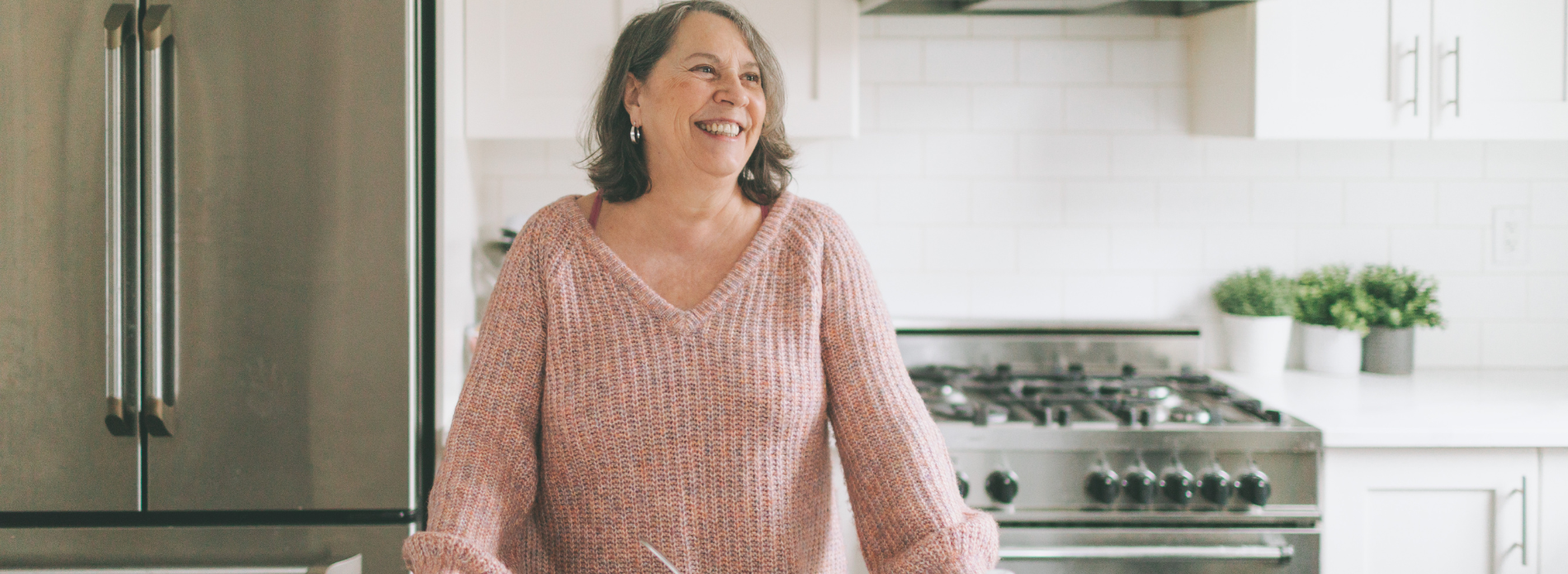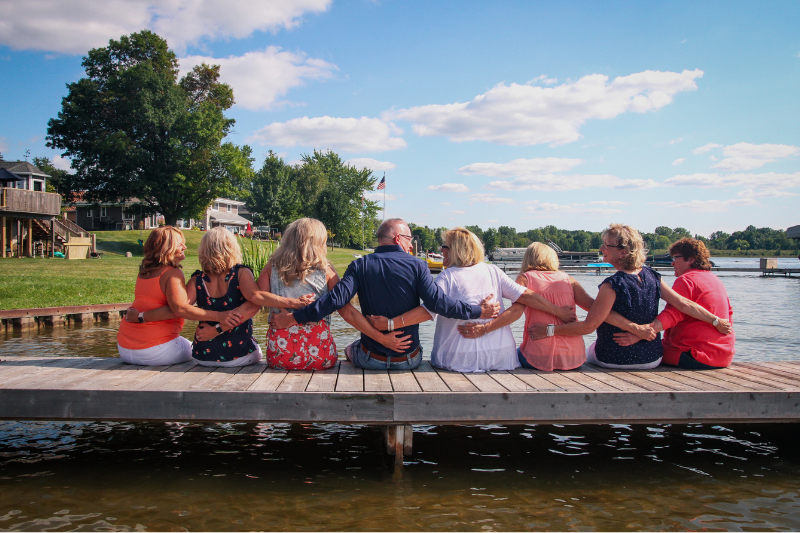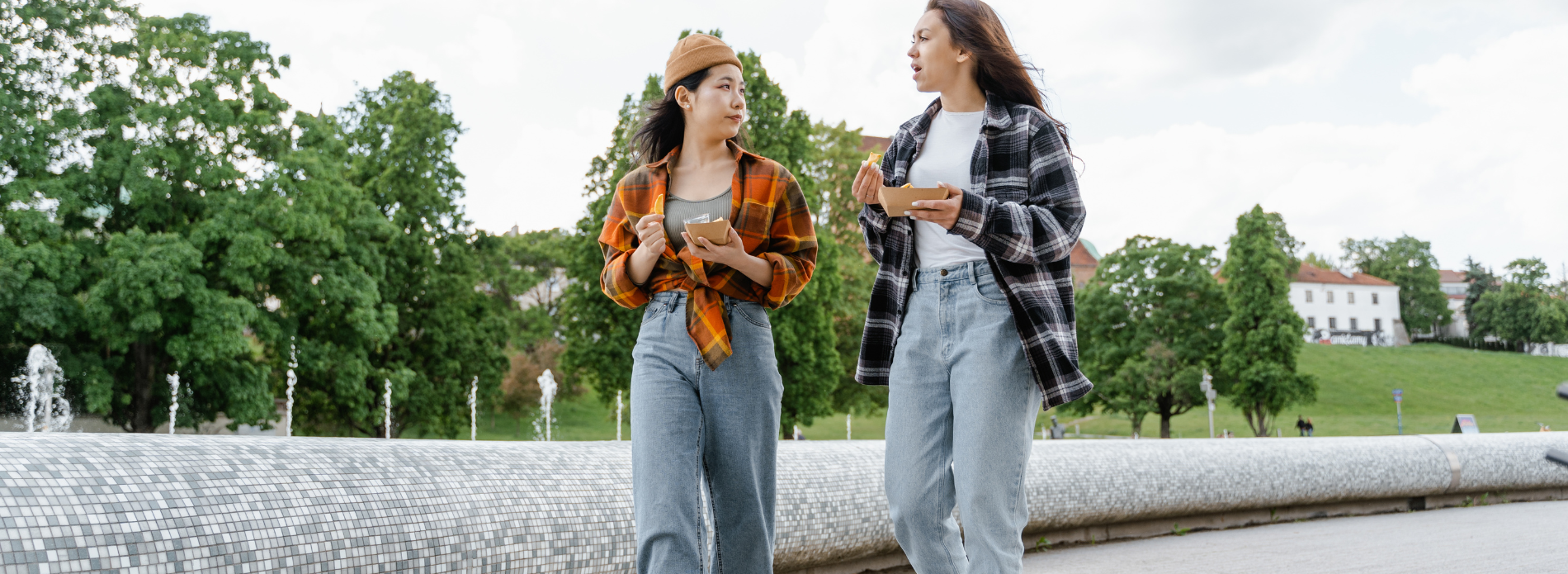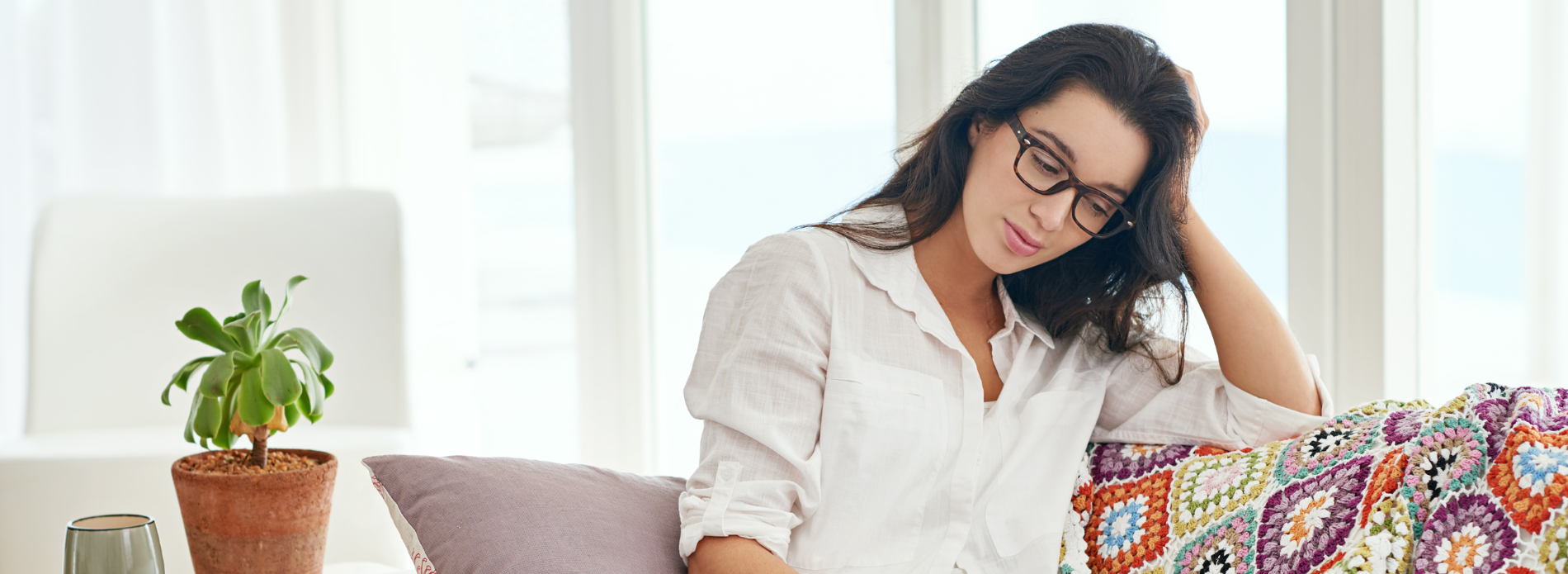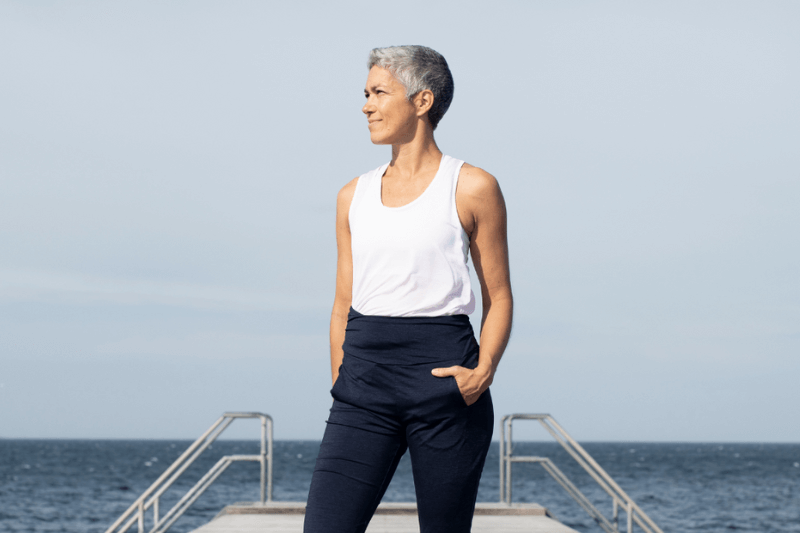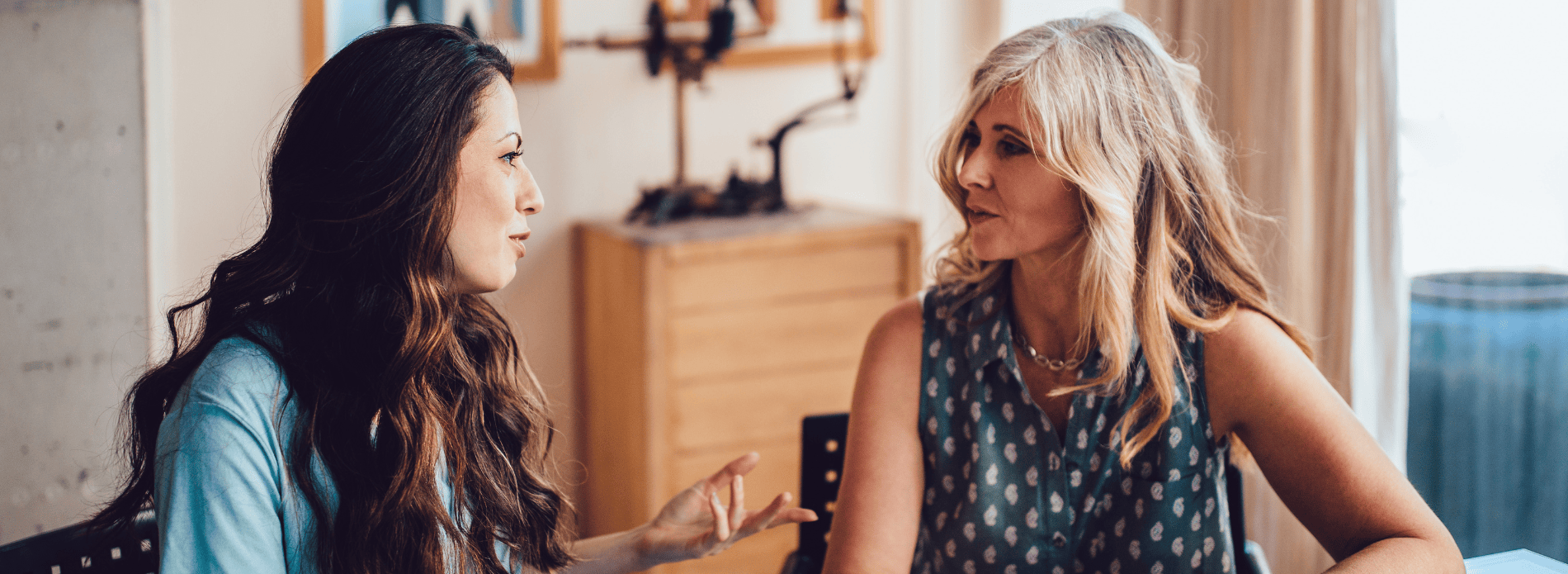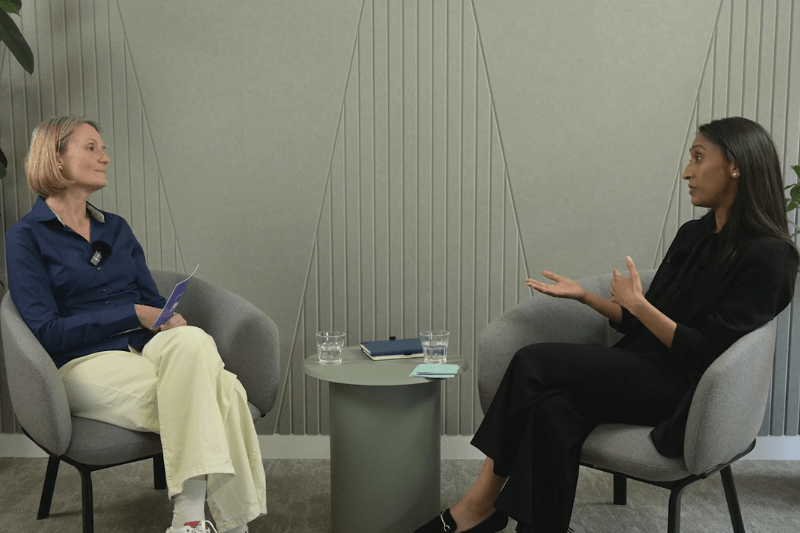There are some health concerns and conditions that can become more likely as women age. Life stages and changes in hormones can affect various parts of the body, however, there are plenty of lifestyle tweaks that women can make to help promote healthy ageing.
Find out what conditions can become more common in later life and arm yourself with the knowledge of how to keep yourself well, now and in the future.
1) High cholesterol
Cholesterol is a type of blood fat which is made in the liver and is found in some foods. We all need some cholesterol in our bodies just to keep us ticking over but having too much can clog up your arteries and lead to health problems.1
Eating too much fatty food, lack of exercise, being overweight, as well as smoking or drinking, can all cause high cholesterol. Another cause of high cholesterol is familial hypercholesterolaemia (FH).
About one in 250 people has FH which is an inherited condition that means their cholesterol levels are higher than normal from birth. It’s caused by an abnormal gene and, despite it putting people at high risk of early heart disease, most of them don’t even know they have it.2
>Read more about what cholesterol is and how you can help reduce it
Cholesterol levels are also likely to increase with age and, for women, during and after the menopause a woman's risk of high cholesterol goes up.3 This is due to the drop of oestrogen levels when menopause occurs, as oestrogen has protective effects on the heart and can help keep blood vessels and arteries healthy.4
Lifestyle tweaks
With high cholesterol increasing the risk of heart attacks and strokes, you can help keep levels in-check by:
- aiming for regular weekly exercise,
- avoiding fatty and processed foods,
- not smoking,
- and having a healthy and balanced diet full of fruit and vegetables.
>Explore our diet and nutrition hub for some balanced and healthy diet inspiration.
2) High blood pressure
Like high cholesterol, older age and menopause can also increase the risk of high blood pressure. As we age, structural changes in the body’s blood vessels or vascular system occur – arteries get stiffer causing blood pressure to rise.5
High blood pressure is one of the main risk factors for cardiovascular disease, especially heart attacks and strokes. Steps to help keep blood pressure at the right levels are similar to cholesterol, along with avoiding or limiting alcohol.5
A normal blood pressure reading for most adults is a systolic pressure of less than 120 and a diastolic pressure of less than 80. For older adults, often the first number (systolic) is 130 or higher, but the second number (diastolic) is less than 80.
The US National Institute on Aging highlight this is called “isolated systolic hypertension and is due to age-related stiffening of the major arteries.” It’s the most common form of high blood pressure and can lead to serious health problems, as well as:
- shortness of breath during light physical activity,
- lightheadedness when standing up too fast,
- and falls.6
It's important to try and keep blood pressure in check in older age, as the combination of falling due to high blood pressure and weaker bones as we age can result in an increased risk of fractures.
Blood Pressure UK has a section dedicated to how best to take your own blood pressure to get the most accurate reading.
>Read more about high blood pressure
3) Osteoporosis
Osteoporosis is a condition that weakens bones and makes them more fragile and susceptible to breaks. It affects over three million people in the UK with more than 500,000 receiving hospital treatment for fragility fractures, as a result of the condition, annually.7
Most will reach their peak bone mass between the ages of 25 and 30 but by the time we reach age 40, we slowly begin to lose bone mass.8
Women are more at risk of osteoporosis and fractures than men, as oestrogen has protective qualities for bones. However, as the menopause causes oestrogen levels to drop, bone density also drops leading to weaker more fragile bones.
In the 10 years after menopause, women can lose 40% of their spongy, inner bone and 10% of their hard, outer bone – leading to a reduction in bone strength.9
Lifestyle tweaks
Exercise
A combination of weight-bearing, resistance and balance training exercises can help build and maintain strong bones.
Weight-bearing – any exercise that supports the weight of your own body, for example tennis, jogging or brisk walking all counts.
Resistance and strength exercises – includes using resistance bands, cycling, dancing and even gardening, as well as lifting weights which can be as simple as lifting a tin a beans when sat down, to help strengthen the wrists.
Balance exercises – yoga or Tai Chi can both help improve flexibility and balance.
>Learn more about which exercises are recommended for older adults
4) UTIs
UTIs are common in older people and more likely in women, as it’s easier for bacteria to reach the bladder compared to men and the urethra (urine tube) is shorter’. It’s thought they’re more common in older age due to a weaker flow of urine and the bladder not being fully emptied.10
UTI symptoms may be mistaken for another condition, such as dementia. This is because UTIs can cause severe confusion which develops quickly over a few days, especially in older people.10
If you’re concerned about your health and any symptoms you might be experiencing, then speak to your GP.
>Read more about UTIs in our article on the topic.
Lifestyle tweaks
Sometimes UTIs can’t be prevented but there are steps you can take to help reduce the risk:
- Wipe from front to back when going to the toilet.
- Maintain good hygiene by washing daily and avoid using perfumed soaps and body wash.
- Try and fully empty your bladder when going to the toilet and also urinate after having sex.
- Wear cotton underwear instead of underwear made of synthetic materials.
- Stay hydrated. Most people should aim to drink enough water during the day so their pee is a clear pale yellow colour.
- Change incontinence pads regularly.
- Avoid putting it off when you need to pee.10
5) Dementia
Around twice as many women have Alzheimer’s disease – the most common type of dementia – compared to men.11
Dementia is the name for a group of symptoms associated with an ongoing decline of brain functioning. It can affect memory, thinking skills and other mental abilities.12
Research suggests that women have a greater risk due to them typically living longer than men, and age is the biggest cause of dementia.11 Further studies on the differences between the sexes are needed but other factors such as lifestyle and genetics can also play a part in increasing a woman’s risk.
What factors can increase the risk of dementia?
- Social isolation, depression and loneliness – social isolation and depression have been linked to a higher risk of dementia. As women live longer there’s a likelihood that they will outlive a male partner. Women who live alone are more likely to experience loneliness and depression.
- Pre-existing conditions – such as high blood pressure. As previously mentioned, menopause can make high blood pressure more likely, along with age. Women who develop high blood pressure in their 40’s may be more likely to develop dementia later in life.13
- Lower levels of physical activity – particularly in mid-life have been linked to a higher incidence of dementia.13
- Menopause – the role of oestrogen plays a part in brain health too. With lower levels after the menopause, it’s possible that this impairs the brain’s ability to learn and form memories.13
- Genetics – women who have the ‘ApoE4’ gene variant have a greater risk of dementia. Nearly two thirds of people with Alzheimer’s disease have at least one copy of the ApoE4 gene. Although men and women are just as likely to have the ApoE4 gene variant, its effect on dementia risk seems to be greater in women than it is in men.11
Looking after your health at any age is important but knowing what steps to take now can help prevent some conditions commonly associated with older age. Ageing doesn’t have to mean living in poorer health than your younger self, it’s about embracing any changes and tweaking your lifestyle to keep you in good health.
Further reading
- Keeping well in your 60s and 70s
- Staying active over 60
- How to help boost bone health
- What is a ‘Health Check’ or medical MOT?
References
- What is cholesterol? – Heart UK
- Focus on: Familial hypercholesterolaemia – British Heart Foundation
- High cholesterol – symptoms, causes and levels – British Heart Foundation
- Menopause and your heart – British Heart Foundation
- What is normal blood pressure by age? – The Heart Research Institute
- High Blood Pressure and Older Adults – National Institute on Aging
- Osteoporosis – Age UK
- Peak Bone Mass – Orthoinfo
- Healthy bones at every age – OrthoInfo
- Urinary tract infections (UTIs) – Age UK
- Why is dementia different for women? – Alzheimer’s Society
- Alzheimer's disease – NHS
- Sex, gender and dementia – Alzheimer's Research UK
